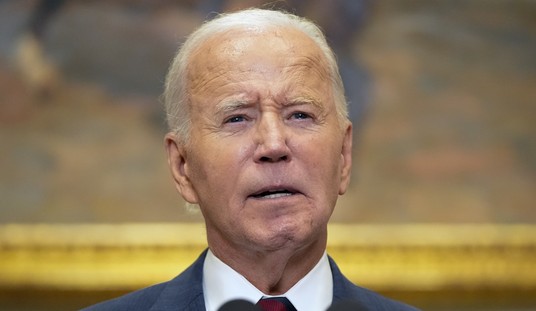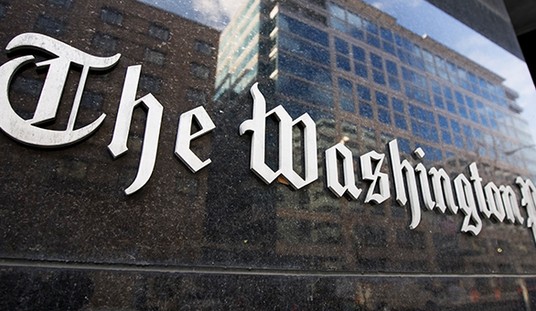The death spiral of the Islamic Republic seems to be gathering momentum. That big fire at a major oil well I told you about last week continues unabated, with big flames and clouds of noxious black smoke pouring out. And these are the people who offered to clean up the much larger catastrophe in the Gulf of Mexico.
But mere physical disaster is trivial compared to the events that are taking place in Iran. In the past week, the regime has been confronted with two direct challenges: a strike in the grand bazaar of Tehran, and the very public battle between conflicting elements of the regime for control over the Free University. The strike in the bazaar — protesting a dramatic 70% increase in their taxes — was taken very seriously by the regime, because the supreme leader and his cronies know that if the merchants turned against them it could prove fatal. Khamenei capitulated within a few hours, just as he had two years ago when the bazaar shut down for an entire week. This sudden about-face from the supreme leader did not bring order to the country’s markets; the strike continues, which is big news indeed.
The Tehran bazaar was closed again on Wednesday, and spread to at least two other major cities, Isfahan and Tabriz. The regime reacted violently, sending Revolutionary Guardsmen and Basijis, all in plain clothes, to attack the merchants who had closed their shops. No bullets or clubs this time — the knife has now become the weapon of choice — and the Isfahan bazaar was placed under virtual military occupation.
While the strikes may have begun as a narrowly defined economic protest against new taxes, they soon took on a clear political hue, with chants of “death to the dictator!” ringing out across the bazaar. The latest report I have says that the strikes will continue Thursday, a religious holiday in any event.
This is a very big deal, and everyone knows it. That is why there is violence — about 80 persons wounded and an unknown number arrested, along with one victim, a very popular merchant in Tehran. Will it spread from the normally pro-regime bazaars to the long-suffering workers in such vital sectors of the national economy as oil and textiles? If it does, the ability of the regime to craft a rational strategy of self-defense will be tested.
Entrail readers will take note that on Tuesday, electricity went out all over Tehran no less than six times, which the regime predictably blamed on sabotage by enemy agents. And there is a decidedly negative augury on “regime unity.” Khamenei ran away from deciding the University issue, bravely deciding to leave things as they have been all along. The Free University is a substantial economic and cultural prize, one of the few really big prizes up for grabs in the Shi’ite kleptocracy — most of the others having been gobbled up by the mullahs or by the top brass at the Revolutionary Guards. As between physical plant and cash flow, the University is worth several billion dollars. Thus, the battle for control. Khamenei’s failure to take sides leaves both contenders spitting.
Meanwhile, gunfights continue to break out along the Baluchi border, and the aging fleet of Tupolov aircraft continues to experience a spectacularly high rate of hydraulic failure, most recently on Monday on a flight heavily populated with RG officers flying from Abadan to Mashad for vacation. The plane had to make an emergency landing and although there were many casualties, the pilot’s skill prevented a major disaster. Nobody trusts Iranian airplanes these days; the EU has banned the bulk of Iran’s civilian aircraft on safety grounds. But that is a different matter from the pandemic of breakdowns of RG planes, which have a distinct odor of sabotage.
It’s not surprising to see considerable internal turmoil within the ranks. Ryan Mauro calls our attention to the many signs of dissent within the Revolutionary Guards Corps.
On June 9, a top IRGC strategist, Hassan Abbasi, openly complained [13] that “we cannot count on many of the establishment’s own who were blessed by Khomeini and senior officials because sometimes their hands might actually be joined with the enemy’s.”
The IRGC defector, Muhammed Hussein Torkaman, said [1] that Ayatollah Khamenei and President Ahmadinejad had a plane on alert to fly them to Syria during last summer’s enormous protests. Another report [14] claimed that the plane was to go to Russia, but that is beside the point. Torkaman says that Khamenei has formed his own intelligence unit to spy on the top security services and he is rumored to be switching his bodyguards every single day.
One member of the security forces plainly told [15] The Los Angeles Times that he and many others at his base would refuse to follow orders to attack protestors during an uprising. “I would never do it. Maybe someone would, but I would never fire on any of these people myself,” he said.
Read the whole thing, and add to it the ongoing purge and reshuffling of top RG officers, especially in those areas where open confrontation is the order of the day.
The opposition is well aware of the cracks in the iron fist, and Mir Hossein Mousavi dedicated a considerable part of a statement this week to the Guards. He
pointed out the IRGC’s role in the post-election oppressions, arrests and interrogation of political prisoners as well as the Guards involvement in the financial sector with an “unbelievable size”. In addition, he called for the IRGC to return to its initial purpose which was to protect the country in the face of foreign threats and to create an environment suitable for economic development and fighting corruption.
“Unfortunately, we will witness a decline in the reputation of the IRGC and a dwindling of popular support for the IRGC. It is foreseeable that with the current trend, the IRGC will defend its companies, shares as well as financial and monitory institutes instead of defending the people and the country.”
It’s obvious that Mousavi is talking about current events, not the future, when he says the IRGC will lose popularity; that process is well advanced, and is part of the ongoing revolution that threatens the survival of the Islamic Republic.
Those who thought that the Greens had been crushed may have trouble recognizing revolution in its new clothes. Ahmad Batebi, who for a while was the international icon of the Iranian resistance (he was on the cover of The Economist, holding up a bloody tee shirt), recently gave a long interview, in which he had some very thoughtful insights. Have a listen:
The western world or the media think that movement means demonstrations, and if the latter doesn’t exist, nor does the former. However, we know that the culture of the Iranian people is different than that of the outside world. The fact that [the Iranian people] write slogans [on walls and banknotes] in the color green and distribute cassettes and CD’s demonstrates that the movement is alive. The movement is learning how stay alive without incurring deaths and arrests. The movement is transferring from one form to another.
In all social movements across the world, you see that when a movement goes underground, for a very short period of time, the activists become slower. This is not sluggishness, but rather the period of transformation. We are passing through this phase. This time, when we have protests in June, we will have less people arrested, less people killed, and that is how people will learn. It is natural that the government learns how to suppress people and the people learn how to resist.
Today the resistance takes many forms, and its leaders hope they can grind down the mullahcracy until it finally — as Marx would have put it — collapses of its own contradictions. The strikes in the bazaars show that a previously reliable component of the regime’s base has turned on Khamenei & Co., and the cracks in the Revolutionary Guard Corps suggest that the same process is fracturing the regime’s praetorian guard. If Iranian workers had a strike fund — as I have been saying for years — we would see how profound the fissures really are.
Faster, Please.









Join the conversation as a VIP Member